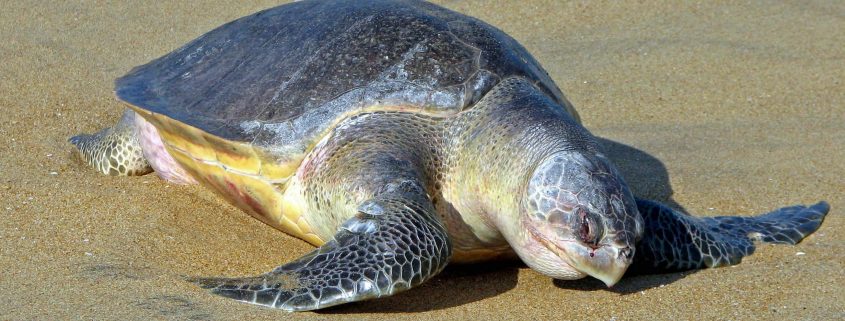Impact of Costa Rican Longline Fishery on its Bycatch Species
by Fiona Graham, RJD Graduate Student and Intern
Bycatch, the incidental catch of non-target species, tends to be high when using non-discriminatory fishing methods, such as longlining. Longline fisheries, such as that of Costa Rica, generally target mahi mahi and silky sharks, however data collected by an observer program shows that a large percentage of their catch is olive ridley turtles and non-target shark species. These longlines literally consist of long lines of baited hooks that stretch for miles and soak in the water for hours. Unfortunately, fisheries bycatch is one of the primary reasons for population declines in sharks, rays and sea turtles. This is due to their life history characteristics, such as long lifespans, late age of maturity, and few offspring, that make them inherently sensitive to these high rates of mortality.
In a recent paper describing the impact of the Costa Rican longline fishery on its bycatch species, authors Derek Dapp et al. examine the catch numbers, capture locations, seasonality and body size of non-target sharks, sting rays, bony fish and olive ridley turtles. The paper uses data from the fishery observer program from 1999 to 2010 where observations were conducted onboard six medium scale vessels out of a Costa Rican fleet of 350 vessels. One troubling, but not so surprising result of their analysis found that the olive ridley turtle was the second most abundant species captured by the fishery. Two of the six major beach nesting aggregations for olive ridleys in the world are in Costa Rica, and populations at these two main nesting beaches have declined since the 1980s. Based on (most likely an underestimate) of the number of olive ridleys caught by the fishery – 290,500 a year – the impact of the Costa Rican longline fishery on olive ridleys needs to be greatly reduced.
Large numbers of sharks and rays are also caught as bycatch by the longline fishery, where rays are thrown back overboard and sharks are retained for their fins, meat, or as bait. Notably, the authors were able to identify a blacktip nursery near the Osa Peninsula due to the presence of high catch rates of juvenile blacktip sharks during the spring and summer months.

Catch per 1000 hooks on longlines for blacktip sharks, indicating the presence of a nursery ground near the Osa Peninsula (figure: Dapp et al. 2013).
As well as affecting blacktip sharks, the authors found that the fishery affected the other two species of shark that they examined, silky sharks and pelagic thresher sharks. They concluded that there is a clear need for more effective management of the Costa Rican fishery.
While this is an obvious conclusion to be made here based on the data available, the specific management protocol and how that management is put into place and enforced is a more complicated discussion. In this recent paper, Dapp et al. criticize many fisheries biologists for believing that the only acceptable methods of reducing bycatch are those that do not inconvenience fisherman or reduce their target catch substantially. They conclude that the only solution is through reduction of fishing effort through creation of marine protected areas or time area closures. They also suggest placing observers on at least 50% of medium and larger fishing vessels to acquire more data on fishing methods and bycatch and to educate fishermen to improve their techniques and to release bycatch species alive.





Costa Rica seems to face multitudes of this type of problem. From the work I have done there, it honestly seems that the economy is the primary factor to blame. Some Costa Rican families are lucky to bring in $200 or $300 each month to feed their families, meanwhile the prices are skyrocketing due to the high immigration of North American and Europeans, demanding higher standards. It hard to explain to a starving family that they should stop harvesting organisms illegally, be it sharks, sea turtles, sea turtle eggs, etc, when they can make more than when working a “normal” job. Maybe if there is a better program to employ Ticos in sustainable and profitable jobs, then they will realize the harm that these harvesting techniques are causing to their beautiful country.